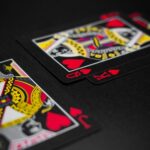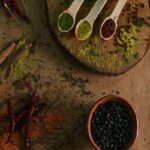Fish can be the most delicate of foods to cook. If it’s prepared improperly, it can become dried out and tough, which is why it’s so important to choose the right type of pan when you cook fish at home. These tips will teach you how to select the right kind of pan based on the type of fish you are cooking, as well as other helpful tips that will keep your fish juicy, tender, and delicious.

What do you need to know about buying the right skillet?
There are many things that can affect the quality of your fish, but when it comes down to it, nothing is more important than the pan you cook it in. With so many types of pans on the market and differing opinions on what will work best, finding a pan that doesn’t ruin your dish can be a daunting task. This guide will provide three options for cooking different types of fish with helpful tips for determining which is best for you.
Beginning with nonstick coating and culminating with an uncoated cast iron pan, we’ll cover the perfect type of skillet for every type of fish from white to blue-green varieties. Nonstick coatings may seem like the most attractive option at first glance, but they’re typically coated with toxic chemicals such as PFOA (perfluorooctanoic acid).
Nonstick coatings also get scratched over time, meaning that dangerous chemicals leech into whatever food you’re preparing. The next type of pan is an enameled cast iron one with two downsides: they don’t conduct heat very well and they’re heavy. If weight isn’t a problem for you then this may be a good option if durability and rust prevention are top priorities.
Cast Iron skillets are relatively inexpensive because they last forever, but not if you accidentally drop them onto your floor! Copper skillets are another popular choice, but they require special care or they could react negatively to acidic foods like tomatoes.
A carbon steel pan has similar problems as copper; stainless steel ones scratch easily and lose their shine after too much use. Finally, there’s the traditional cast iron pan that provides the most benefits in terms of flavor, distribution of heat, and even cooking and is affordable too. Don’t forget about how easy these babies are to clean up.
How to choose an ideal cast iron skillet for your home?
There are many benefits to cooking in a cast iron skillet. One of the most important is that it will never warp and has a non-stick surface that is naturally made to sear foods. But, not all cast iron pans are created equally! Here’s what you need to know before selecting one for your home.
There are two main types of cast iron skillets: pre-seasoned and unseasoned. Pre-seasoned means you’ll have to season it before each use so that you can add food to the pan without damaging the existing seasoning on it. Unseasoned has no additional coating and comes with directions on how to season before your first use.
Seasoning an unseasoned cast iron pan may seem like more work but it’s actually very simple. All you have to do is rub the surface with vegetable oil and bake at 400 degrees Fahrenheit for about 45 minutes or until lightly brown. Once cooled, wipe out any excess oil and store until next time (this is best done while the skillet is still warm). Cast iron requires less maintenance than other cookware because it doesn’t scratch or dent easily and usually lasts generations if cared for properly!
So, which type should you choose? If you want to cook delicate items such as eggs then an unseasoned skillet is ideal. However, if you’re going to be searing meats then we recommend getting a pre-seasoned skillet because it helps prevent sticking and burning.
Why you should always have a nonstick pan?

Fish can be a healthy and flavorful meal, but many people shy away from cooking it at home. One of the top reasons for this is that they are scared about using their fry pans to cook fish. Nonstick pans will help your fish come out crispy on the outside without adding any unwanted flavors to the meat like some other materials might.
After looking over all the reviews, we think that you’ll agree that our number one pick for nonstick fry pans is made by Calphalon and it’s called The Contemporary Non-Stick Fry Pan 10-Inch. It comes with a lifetime warranty and also provides excellent customer service should anything happen to your pan. Read on for more about this pan and why it’s our favorite for frying up a batch of delicate seafood at home!
When it comes to professional cast iron cookware?
It’s difficult to tell the difference between an expensive, high-quality professional grade pan and a cheap one at a glance. That’s why we’re going to go over the features of each in hopes that you will be able to make an educated decision when looking for a new cast iron frying pan. It goes without saying, that these types of pans are meant to be used with cooking oils which not only add flavor to your food but also keep it from sticking.
Cast Iron is naturally non-stick (with the exception of cornbread) and makes cleaning the pan much easier since oil can be heated to higher temperatures than other types of cookware. One side of the pan has been pre-seasoned so there’s no need to add any additional oils or coatings.
A few common mistakes people make when using cast iron cookware Never use soap, use too little oil, and fail to bring the oil up to temperature before adding ingredients. Always let the pan heat up first before adding food and then don’t forget to turn off the stovetop after everything is done cooking! Once you’ve finished cooking you should take care of your dish by handwashing with mild soap – never place it on high heat as this may warp or ruin the seasoning coating.
Avoid prolonged contact with water because it will dissolve the seasoning on the surface of the pan. Be sure to thoroughly dry your pan afterward and store it somewhere away from extreme heat such as in a cabinet or pantry. Finally, keep in mind that seasoning must build up gradually like anything else; the more you cook and maintain your pan, the better it gets.
The most popular pots on Amazon
You will be spending a lot of time in your pan, so you should get the best that money can buy. I love my All-Clad Skillet for searing fish because it is nonstick, has evenly distributed heat, and can go from stovetop to oven. Cast iron frying pans are my second favorite option because they distribute heat very well and don’t need any type of oil. If you cook in a pan on your stovetop often, use an induction cooktop for even heating, clean-up, and quick responsiveness to changes in temperature.
If you’re cooking for more than one or two people, consider investing in a cast-iron Dutch oven with a lid or a wok. The advantage of these two pots over traditional fryers is that they require less oil when cooking. A major downside of both options is that food does not have as crispy a texture as it does when fried in oil. No matter what type of pot you choose, make sure to invest in a pot holder or some other kind of protective handle so that you do not burn yourself while removing hot pans.
How to tell if it’s time to replace your skillets and pots?
It’s hard to gauge the condition of pans without a little help. You can try your hand at scratching the surface and it’ll give you a good idea of what your pan looks like. More than just a blackened ring, if you can’t get past that with just a fingernail, it’s time to retire the skillet or pot. Remember, maintaining your cookware is part of keeping your kitchen safe and healthy! Here are some ways to keep up on skillets and pots:
If your old Teflon coating starts coming off in bits and pieces, use some oven cleaner on a clean rag to scrub off any remaining residue. If all the layer of Teflon is coming off then use a metal spatula to scrape off any remaining coating. Clean the pan well with soap and water before seasoning.
Oils from cooking will eventually discolor aluminum surfaces, so make sure you coat them thoroughly with oil before each use to prevent this problem from developing over time. Cast iron is non-stick when properly seasoned and should not need anything other than soap for cleaning (without drying) after cooking food in it. The higher heat range also makes cast iron an ideal material for making those perfect fried eggs.
Potatoes, steak, pork chops, bacon—the list goes on and on when it comes to perfect dishes cooked in cast iron. The heavy weight and thickness of cast iron also provide even heating across the entire surface for recipes where ingredients have varying levels of doneness (think baked beans). With its durable finish, cast iron lasts longer than most materials; plus unlike many other pans out there today it’s environmentally friendly too!
When you should consider buying pre-seasoned cookware?

While some pans are manufactured with a non-stick finish and don’t need any additional seasoning, others do require a coat of oil or another cooking spray to prevent sticking. The type of food you’re cooking will dictate which material you choose for the coating. If you plan to cook fish in your pan, look for an option that is pre-seasoned with a slick ceramic surface. You can also season cast iron pans by rubbing them down with vegetable oil.
To avoid buildup on stainless steel or aluminum, make sure you clean it after each use and never store raw meat on it without a protective cover. Copper bottom pots and pans provide superior heat distribution, but they cost more than twice as much as their stainless steel counterparts. Anodized aluminum requires no special care but doesn’t conduct heat as well as copper or stainless steel.
Nonstick pans have Teflon coatings (that degrade over time) and typically cannot be cleaned with soap. A variety of finishes on these pots and pans include ceramics (the best) titanium (lasts longer than Teflon), enamel (non-reactive to acidic foods), and hard anodized aluminum (resistant to scratching). Stainless steel has no coating, so it must be hand washed. Hard anodized aluminum has no coating, so it should not be used in ovens or microwaves.
The durability of cast iron depends on how often you take care of it: if left unwashed for too long, rust will form and destroy the integrity of the pan. Ceramic provides excellent heat retention properties but may crack if dropped from high heights. Titanium provides excellent performance at half the price compared to copper, but oxidizes when exposed to acids like tomatoes or wine and cannot be used under extreme temperatures like broiling or frying eggs.
Conclusion
So there you have it. A rundown of all the pans you’ll need for a perfect cooking experience, plus our top five recommendations for each category. Of course, picking out a frying pan isn’t just about what’s best for cooking fish—it’s about making your life easier and more delicious in the long run. Whether you’re looking to cook up that perfect piece of filet mignon or learn how to make those delectable fillets from scratch, there’s a fryer out there just waiting for you to purchase it and get cooking!
Also, check out the latest articles “Joy of cooking” and “Campfire cooking kit“
Hi I’m Bilal Malik, a digital marketing and blogging expert holding years of experience.










